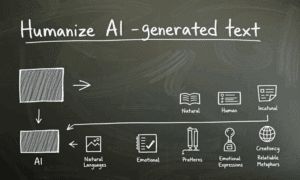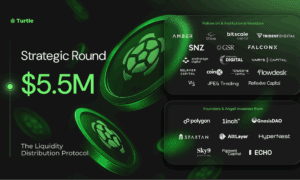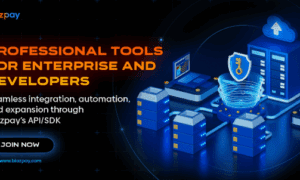Live payment solutions are shaking up traditional methods of business and banking. With fintechs pushing swift payments, cross-border money transfers, and inter-party transactions, live payment solutions are here to stay. Despite the impressive customer satisfaction level from individuals and businesses, fintechs are not resting on their laurels.
So far in 2025, there has been a truckload of new fintech payment innovations. Let’s explore these innovations and discuss the prospects of fintechs in our financial future. This piece presents both business and user perspectives. Enjoy.
Real-Time Payments And Instant Settlement
Real-time payment solutions have become crucial to modern financial systems. Customers and businesses want their money available instantly, anywhere they go. This is how instant casinos on comparison sites like Pikakasinot earned the name in the first place. Here, players can make deposits instantly and play their favorite games within seconds.
Instant payment solutions have a long list of advantages. At the top of the list is quick access to funds, control of cash flow, lower risks, and costs in payment processing. These advantages allow businesses to run smooth cash operations and maintain a traceable financial record. This explains why over 100 countries support these payment systems.
One of the most prominent payment solutions in this regard is Trustly. Their pay-by-bank solution perfectly matches people’s preference to transfer money directly between accounts. Companies like TransferMate and Worldpay have also built strong systems that support instant settlements in over 50 markets. These new systems use live settlement, where receiving banks get funds and update customer accounts within seconds.
AI And Machine Learning In Fintech Payments
AI and machine learning are key to payment security and efficiency in financial technology. One of the most powerful uses of AI is payment fraud detection, which is the top priority of many payments professionals. Many financial institutions are interested in this technology, while others plan to invest in it.
AI-powered tools can now spot millions of dollars in fraudulent applications weekly. This is essential, especially with growing concerns of online fraud. AI fraud detection tools can analyze transaction patterns within milliseconds, saving humans several hours of manual detection.
Aside from improving security, users enjoy AI chatbots that respond in less than 10 seconds. This is a huge improvement compared to humans, who can take up to 3 minutes. The swift response time of AI chatbots creates smooth payment experiences for users.
Other perks of AI solutions include forecasting customer payment behaviors and optimizing transaction routing across payment networks. Payment providers have also experienced reduced false declines and a boost in authorization rates.
The Rise Of Embedded And Invisible Payments
Embedded payments are revolutionizing the financial market as we know it through their integration into non-financial platforms. This changes how consumers interact with financial services. The change is not limited to a select few; it’s global, with more daily adoptions.
Traditional payment methods pale compared to embedded payments that work invisibly in the background and remove transaction friction. Businesses can now capture payment processing revenue while their customers enjoy better experiences.
The technology of embedded payments offers more than convenience. It creates invisible payments that are processed automatically without user input. You will find real-life applications of this technology in Amazon Go stores, biometric payments with facial recognition or palm prints, and ride-sharing apps.
Embedded finance has many advantages for businesses. For example, payment providers like Trustly create solutions that help software companies increase their revenue outside subscriptions. This proves that embedded finance is no longer experimental; it has become mainstream. As digital payment solutions continue to grow, embedded finance will become more popular.
Stablecoins, CBDCs, And The Future Of Digital Currency
Digital currencies are an essential part of fintech payment options. They offer solutions for cross-border transactions, financial inclusion, and payment infrastructure. These digital currencies are the next frontier in payment innovation, and fintechs are readily adopting them.
With central bank digital currencies (CBDCs) and stablecoins, this financial transformation will continue long into the future. Wondering what CBDCs and stablecoins are? CBDCs are digital versions of national currencies issued by central banks, while stablecoins are privately issued digital currencies pegged to stable assets.
The CBDC movement is building momentum. Over the last few years, three central banks have launched live retail CBDCs in the Bahamas, Jamaica, and Nigeria. Stablecoins have also shown remarkable growth. Their circulation has doubled in the last 18 months, and more financial institutions use stablecoins.
Since stablecoins are privately owned, jurisdictions have had to tread with caution. For example, Europe’s MiCA framework has clear guidelines on issuing stablecoins. The GENIUS Act in the US also sets clearer standards for the regulation of stablecoins.
The Evolution of Payment Technologies in 2025
Payment technology is changing as new developments unfold. So far, we have seen live payments that altered customer expectations for 2025. To stay competitive, payment providers must now adopt AI and machine learning solutions for better security and swift payments. Built-in payments have also changed how people handle money today.
Going forward, you can expect digital currencies to make more of an impact in the next wave of fintech innovations. Private stablecoins and government-backed CBDCs will increasingly become popular alternatives to traditional payment options. We will have a more connected payment system that is safer and faster. The future of payment technologies is smart, speed, convenience, and transparency. Both businesses and users will enjoy the immense benefits of these innovations.



































